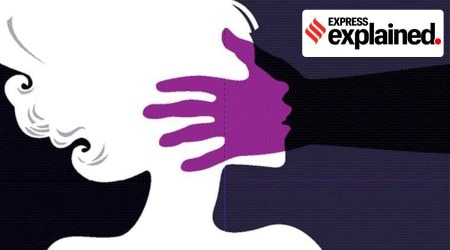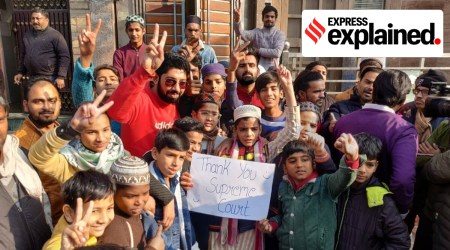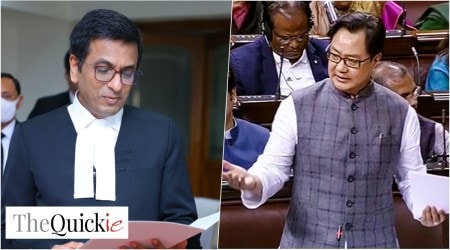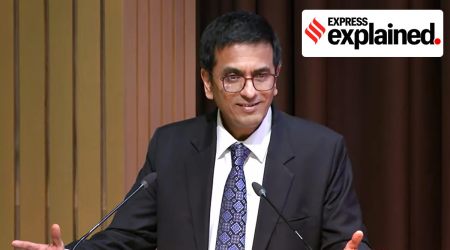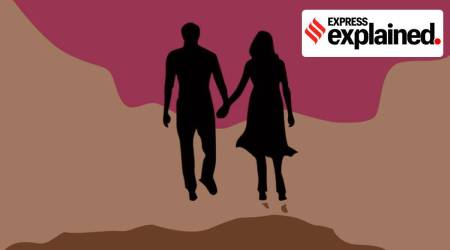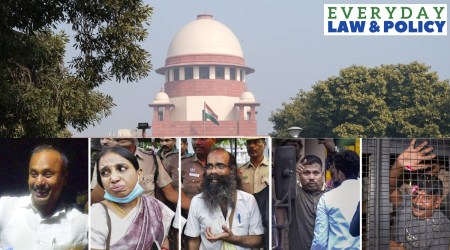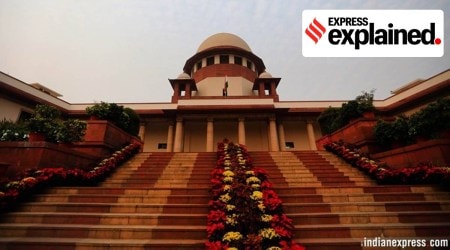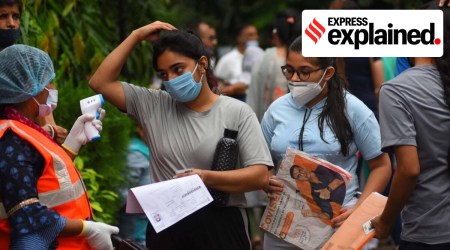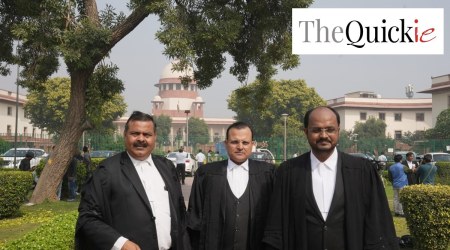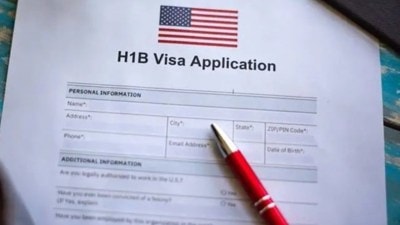EXPLAINED LAW NEWS - Page 30
Man who urinated on woman on Air India flight accused of ‘outraging her modesty’: What is this offence under IPC?Subscriber Only
Air India 'urination' case: Shankar Mishra is accused of 'outraging the modesty of a woman', which is a punishable offence and can lead to either a jail term of up to five years or a fine or both.
Who was Kesvananda Bharati and how was he associated with the ‘Basic Structure’ doctrine?Subscriber Only
As Vice President Dhankar rekindled the debate over the “Basic Structure” doctrine, we take a look at Kesavananda Bharati, the man whose court case resulted in the the Supreme Court’s landmark verdict regarding it
Two IndiGo fliers held in Patna: What rules say about drinking on flightsSubscriber Only
The two were arrested for consuming beer on a domestic flight and creating a ruckus on the aircraft. What exactly is the law about drinking on flights? Are the rules different for domestic and international flights? We explain.
V-P Jagdeep Dhankhar sparks debate with remarks on Basic Structure of Constitution; what is it?Subscriber Only
Vice President Jagdeep Dhankar criticised the Supreme Court for using the Basic Structure Doctrine to strike down constitutional amendments by Parliament, such as the NJAC Act. What is the Doctrine of Basic Structure of the Indian Constitution?
What the NCPCR draft guidelines say on assessing if minors can be tried as adultsSubscriber Only
Earlier, all under the age of 18 were considered minors, but through an amendment in 2015, a provision was added to the JJ Act for trying a child in conflict with the law as an adult in certain cases.
Urfi Javed Controversy: What are the obscenity laws in India?Subscriber Only
Under the Indian Penal Code (IPC), Sections 292, 293 and 294 along with Section 67 of the Information Technology Act deal with the offence of obscenity. How have these been interpreted? We explain.
Which countries in the world allow same-sex marriage?Subscriber Only
Chief Justice of India D Y Chandrachud has transferred to the Supreme Court a batch of petitions seeking recognition of same-sex marriages in India
Haldwani case: How did the Uttarakhand High Court arrive at its ruling?Subscriber Only
On December 20 last year, the Uttarakhand High Court directed the Railways to evict those living in Haldwani’s Gafoor Basti, land adjoining the Haldwani railway station.
Two views on six issues: What the Supreme Court’s demonetisation verdict saysSubscriber Only
The Supreme Court identified six issues in the challenge to the government’s demonetisation decision. Both the majority judgment and the dissent gave their views on each of these issues. We explain.
5 things Justice B V Nagarathna said in her dissent on SC demonetisation verdictSubscriber Only
Justice Nagarathna referred to records submitted by the Union government and the RBI to conclude that the central bank did not apply its mind independently while recommending demonetisation as proposed by the Centre.
Bilkis Bano’s plea rejected by SC: What is a review petition?Subscriber Only
Bilkis Bano's petition challenged the apex court’s May order that permitted the Gujarat government to decide on the remission of the 11 convicts who gangraped her and murdered seven members of her family during the 2002 Godhra riots.
Collegium vs NJAC: What is the renewed debate over appointment of judges?Subscriber Only
What are the two systems for the appointment of judges, and what triggered the fresh debate? We explain.
Court vacations: What are arguments for and against judges taking breaks?Subscriber Only
Law Minister Kiren Rijiju has said people feel that long vacations taken by courts is inconvenient for those seeking justice. How long are court vacations in India — and what are the arguments for and against judges taking breaks? What happens in other countries?
EC tells apex court no legal bar on bodies with religious names to register as parties: What the issue isSubscriber Only
What is the plea that the SC is hearing? What is the rule for political parties' symbols? We explain.
Supreme Court launches online RTI portal: Here is how it worksSubscriber Only
The online RTI portal has been initiated to make it convenient for people to access information about the Supreme Court. So far, RTI applications at the Supreme Court had to be filed only via post.
Supreme Court questions process of appointments to Election Commission: here’s how the system functionsSubscriber Only
A five-judge Constitution Bench led by Justice K M Joseph is hearing petitions seeking a Collegium-type body to appoint Election Commissioners (ECs) and the Chief Election Commissioner (CEC). What is the procedure?
MP law on declaring intention to convert illegal: what the HC saidSubscriber Only
The purpose of the law was to prevent or discourage forcible or fraudulent religious conversions with the promise of marriage, something that Hindutva groups often refer to as “love jihad”.
10 years of POCSO: An analysis of India’s landmark child abuse lawSubscriber Only
A decade after the law’s enactment, a nationwide study throws light on high acquittal rates and the pendency of cases.
Centre moves Supreme Court, wants Rajiv Gandhi case convicts’ release reviewed: what is its argument?Subscriber Only
The Supreme Court's decision in the Rajiv Gandhi assassination case is final, but the Constitution does allow scope for a review. Reviews are, however, not usually admitted — and overturning a verdict in a review is rare.
Cleared by SC Collegium, kept pending by Govt: A few prominent cases of delayed appointment of judges Subscriber Only
In one case, advocate C Emalias, who was recommended for the Madras HC, had his name dropped as the delay in appointment saw him cross the age of 55.
Challenges to the Places of Worship Act: What law says, why SC will examine itSubscriber Only
Challenges to the Places of Worship Act,1991 have been posed through petitions filed by many people, including former BJP MP Subramanian Swamy and advocate Ashwini Upadhyay.
Reservation criteria shift from caste to income, community to individualsSubscriber Only
The 103rd amendment delinked the need for class-based reservations from “inadequacy of representation” and the “need to show backwardness”, and provided guardrails to reservations connected with poverty by allowing a 10 per cent quota based on income criteria of individuals.
4 questions in EWS judgmentSubscriber Only
Apurva Vishwanath breaks down the contents of the four separate judgments into the key issues they addressed
Quotas for poor among ‘forward castes’ upheld: Here’s the case and what the SC has ruledSubscriber Only
The 103rd Amendment inserted Articles 15(6) and 16(6) in the Constitution to provide up to 10 per cent reservation to the economically weaker sections (EWS) among non-OBC and non-SC/ST sections of the population.
With EWS reservation up for Supreme Court review, a look at the case so farSubscriber Only
Calling the amendment “an attack on the constitutional vision of social justice” and “a fraud on the Constitution”, those petitioning against it contend that if upheld, it will be the end of equality of opportunity.
BEST OF EXPRESS





